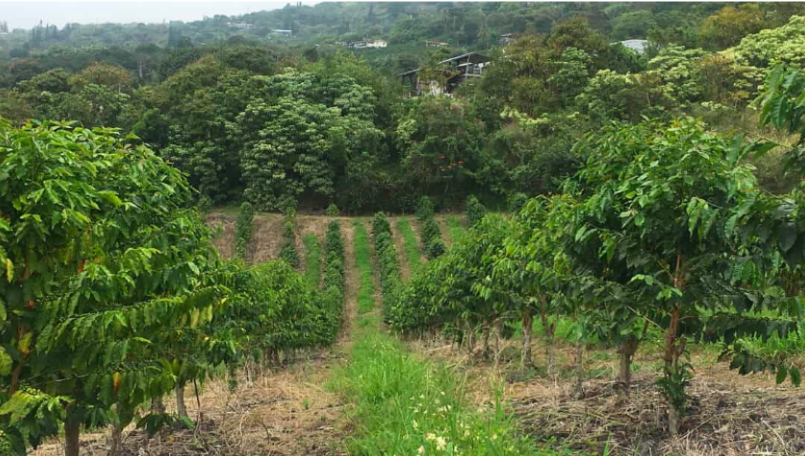NORTH AMERICA
Coffee was the driving force behind much of the infrastructure in Costa Rica in the early 20th Century. With an incredibly rich and biodiverse environment, Costa Rica has been at the forefront of speciality coffee for many years. With an abundance of water, washing the coffee was no problem for the Costa Ricans unlike some other coffee producing countries.
Washed coffee’s have historically fetched a higher price as there are less defects and generally was always perceived as a higher quality coffee. This has paved the way for the coffee industry to implement a significant amount of infrastructure far longer than many other producing countries.
With an increase in micro mills around 20 years ago, Costa Rican coffee is extremely traceable, right back to the exact farm or lot. That said, it is now possible to highlight flavours from a particular crop that may have otherwise been diluted. Honey processed coffee has also played a huge role in the Costa Rican coffee culture with many farmers adopting this method to produce more interesting coffee’s.
Costa Rican coffees have a soft sweetness, light in body and clean in cup. Mild in acidity and often possessing honey or molasses notes. Due to the traceability of many Costa Rican coffees, it is hard to group them all together as some of coffee’s are absurdly different. That said, Costa Rica is always a coffee I look out for on the menu as it pretty much always has some unique gem.
Photo; Anywhere
Check out some Costa Rican coffee recently reviewed:
Home of the famous Pacamara varietal, El Salvador has been an important player in the coffee producing World for many years. After the civil war of the 1980’s El Salvador have been progressive in the speciality coffee industry, while many other countries replaced unique and descript coffee trees for high-yield crops, El Salvador did not go through this process.
In turn, although El Salvador does not produce anywhere near the quantity of coffee as other Central American countries it does produce undeniable quality and unusual characteristics.
An El Salvadorian coffee doesn’t have the punchy flavours and acidity of a Guatemalan however the subtle fruitiness and the gentle fragrance make coffee from this region of the world a perfect everyday coffee.
Photo; Coffee Hunter
Check out some El Salvadorian coffee recently reviewed:
Fiery volcanoes, huge lakes, huge lakes with fiery volcanoes. Guatemala has an iconic postcard worthy landscape that attracts folk from all over the world. It just so happens that the very things that make Guatemala so unique, the volcanoes also play a huge role in providing rich and nutrient land for coffee to grow.
Coffee has been growing in Guatemala since the 1850’s and was always one of main exports for the Guatemalan economy. Right up until the early twenty first century coffee was one of the main economic players in Guatemala. Unfortunately since the coffee crisis in 2001 and many farmers now choosing to farm other more profitable crops, coffee has been on the decline.
One of the great things about coffee production in Guatemala is the fact that many of the farms have their own wet stations so they are able to process their own coffee meaning that many of the coffees leaving the country are traceable right back to the farm.
Guatemalan coffee’s are highly regarded in the speciality coffee world because of the range of different flavours that can be found. The taste profiles can span all the way from light floral or citrus tones all the way through to deeper full bodied chocolatier notes.
Some of my favourite coffee’s have been Guatemalan. The naturals are particularly interesting for me because Guatemala is associated with washed coffees, but naturally processed coffees have recently taken off. With the infrastructure and education that already existed in the Guatemalan coffee industry it's easy to see why they have recently produced some high quality naturals.
Photo; Maria Del Pintado
Check out some Guatemalan coffee recently reviewed:
As a relatively late comer to the coffee industry, Honduras has become the largest producer of coffee in Central America and now produces some of the highest quality coffee in the Americas. The location and terroir are perfect for growing coffee which is the country's second biggest export.
Over 100,000 families are involved in the production of coffee and with the investment in infrastructure and education into processing techniques from the government the coffee industry is booming. However the infamous leaf rust hit Honduras fairly hard in 2012 with many crops badly damaged, while the large amounts of rainfall is also quite a big problem when drying the coffee.
Taste profiles of Honduran coffee are fairly similar to Guatemalan coffees in that they offer a wide range of flavours. From the Northern forested region of Agalta producing darker nutty and caramel flavours through to the Montecillos region which is famed for more citric flavours and juicy acidity.
Photo; Bodhi Leaf
Check out some Honduran coffee recently reviewed:
The coffee industry in Nicaragua has had a pretty turbulent history. Affected by war, the economy, import bans and hurricanes just to name a few the coffee industry has been through a lot. However over the last 15 years coffee production is starting to make a comeback and is firmly on it’s way to becoming as popular as it was in the 19th century.
With the turn around in the coffee industries quantity of coffee produced so did the quality of coffee, with more investment in infrastructure, the processing and the traceability are improving.
Much of the coffee produced in Nicaragua is shade grown (grown under the canopy of trees), this is fantastic for the environment but can also produce some unique tasting coffees. This is no more apparent than in the rich lands of the Nueva Segovia region of Nicaragua is home to a few small holder farmers who are pushing the boundaries of processing coffee and have in recent years put the region on the map by excelling on the cupping table.
As one of the larger Central American countries it would be fair to think that Nicaraguan coffee was even more diverse than its smaller neighbouring countries, however this is not the case. Although there are obviously exceptions, Nicaragua typically produces coffees with lighter, fruitier bodies and crisp acidity.
Photo; World Coffee Research
Check out some Nicaraguan coffee recently reviewed:
One of the most interesting and influential coffee growing countries in the speciality coffee industry. Historically, Panama had a very poor reputation for producing coffee and in comparison to its neighbours on either side, Costa Rica and Colombia produced minuscule amounts.
In recent years however, Panama has produced some of the most unique and expensive coffee in the world. Panama, although a relatively small country is extremely bio-diverse and has a number of micro-climates at altitude which contribute to a perfect coffee growing environment. The stable economy and the infrastructure in Panama enabled a few coffee farms in the region of Boquette to pioneer the Geisha coffee plant which famously sold for extortionate amounts of money, putting Panamanian coffee on the map.
Having been lucky enough to visit Panama, I have sipped a Panama Geisha overlooking the hills of Boquette. Although I wasn’t blown away by the flavours, I was fully aware that unfortunately the best coffee normally gets exported out. I have however tasted Panama Geisha coffee in Australia and had my socks knocked off. The complexity and the delicate flavours that evolved as the coffee cooled were truly unique. Panama as an origin, aside from Geisha does typically produce some other world class coffee’s with similar taste profiles of complex fruit and floral notes.
Photo; This was one of my snaps when visiting Finca Ruiz in Boquette.
Check out some Panamanian coffee recently reviewed:
Mexican coffee is fairly unheard of on this side of the Atlantic with the majority of the coffee heading North to the USA. It also doesn’t produce a great deal of speciality grade coffee with most of the coffee leaving the country sold as commodity coffee. This however may change in years to come as Mexico has a huge amount of land that is perfect for growing high grade speciality coffee as well as a large work force of well established coffee growing professionals.
Watch this space!
With a fairly high traceability, Mexican coffee can have a broad range of flavours. That said, a typical Mexican coffee is delicate and light in body. It doesn’t usually possess the bold fruit notes to that of its Southern neighbours but instead can have a sweeter, chocolate flavour profile.
Photo; Coffee Vine
Check out some Mexican coffee recently reviewed:
Cuba is a land that is perfect for growing coffee and it has done so for hundreds of years. Up until the revolution in the 50’s when many coffee farmers fled Cuba and were replaced by unskilled workers, coffee production was one of the main imports.
With the Cuban economy and trade restrictions in place, modern day coffee farming is fairly dated. With farmers still using mules and processing techniques that haven’t changed for decades, Cuba finds it hard to produce quality in mass. That said, if you are able to find a coffee that is traceable to a farm rather than a region (which is extremely common in Cuba) you may be pleasantly surprised.
Cuban coffee is full of body and low on acidity. Traditionally Cuban coffee is prepared by adding raw sugar to the ground before brewing. This is a clue as to the powerful flavours that the coffee can produce. The majority of the time you will find Cuban coffee roasted fairly dark to create a smokier, tobacco taste profile.
Check out our article on how to make Cuban Coffee for an authentic taster of the countries traditions
Photo; New York Times
One of the most famous coffee names in the World alongside ‘Panama Geisha’, ‘Java’, ‘Juan Valdez’ and the infamous ‘Kopi Luwak’ is Jamaica Blue Mountain coffee. Although Jamaica only produces a relatively small amount of coffee it does have a place in the speciality coffee industry and a long standing reputation for quality.
Up until the Jamaican coffee board was formed in the 50’s little was really known about coffee in Jamaica. Since then, with some clever marketing and being one of the first origins in the world to focus on high quality coffee production, Jamaican coffee (specifically Jamiacan Blue Mountain coffee) was one of the first players in the specialty coffee scene.
Taste profiles of Jamaican coffee tend to be sweet-toned and creamy with a mixture of subtle flavours. Although sometimes lacking in complexity they are always an easy sipper and a crowd pleaser around the breakfast table.
Photo; Jstor Daily
The only coffee producing country in a Developed-World country. Producing a fairly small amount of coffee, Hawaiian coffee finds its way into the market by selling directly to tourist visiting farms or farms producing and roasting coffee at the source.
The price of Hawaii coffee is normally quite high in relation to the quality you receive, this is because labour costs in the US are considerably higher than the rest of the coffee producing World.
Hawaiian coffee is normally fairly pleasing and enjoyable. One of the plus sides of coffee grown in the US is that it is traceable down to the farm, so the subtleties of coffees are expressed more so. That said Hawaiian coffee is typically low in acidity and lacks complexity, it has a medium body with a satisfying sweetness. Unique because of its rarity rather than its quality.
Photo; Royal Kona Coffee





































